Do you Realize What You Have Done?
In the fall of 2020, the potential $1.40/bushel premium for raising seed soybeans for a seed company sounded like a great idea. And it should have been a very lucrative deal. After all, we raised soybeans for seed in the past and it has worked out very well. What I did not know was that the parent seed that we were to plant in the spring of 2021 was being raised in South America!
April 5, 2021 – It was a beautiful, warm spring and everyone was planting beans. We have all learned that there is a potential 10-bushel yield increase if you can plant your soybeans early. Soybeans are light-dependent, but they also gather GDUs, like corn does. If we can plant them early and get them to flower before the summer solstice, then we can capture that yield bonus. However, my bean seeds were in South America, not even harvested yet.
April 20, 2021 – Snow in Central Illinois. No apparent harm. The early planted beans came through it okay. And the cereal rye was still growing.
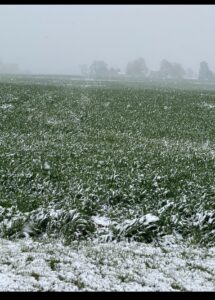
May 1, 2021 – Me: “Any sign of my seed beans yet?” The seed company: “They should be on their way anytime now.” Standard response.
May 10, 2021 – “Your seed beans are on a plane from South America.”
May 24, 2021 – I finally received my seed.
No Turning Back Now…
While I was waiting for my beans to arrive, the warm weather and timely rains had been feeding the cereal rye that I had planted the fall before, and it proceeded to cycle nutrients, feed the biology, add soil structure, and help control weeds (no marestail). By now, the rye was about 5-foot tall. How was I going to manage this?
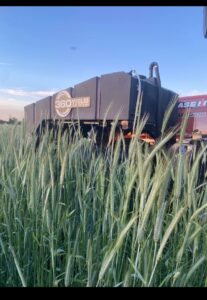
Fortunately, I have been playing around and making mistakes (some call it learning) for the last few years, and I had confidence that I could do this. I chose to plant, then crimp, and then spray with herbicide to make sure the rye did not come back to life. We lifted to row cleaners, planted into a beautiful seed bed, and closed the slot no problem. The soil was mellow and it planted like a dream.
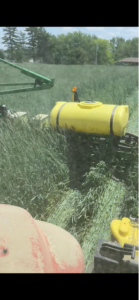
The next day after planting, we borrowed an I and J roller crimper from the neighbor and proceeded to roll the rye down. It crimped well as the rye was just starting to pollenate. As a corn plant starts to put all its resources into the fruit it is producing, so does the cereal rye. The stems became hollow and when crimped, it was not able to stand back up. Termination successful. Just to be sure, we sprayed it with 16 oz of glyphosate.
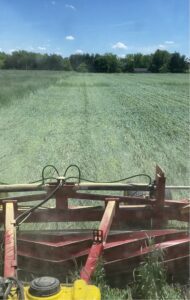
Stay tuned for my next blog post as I chronicle the stand, the growing season, and the benefits of planting green.
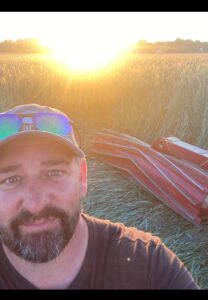




 and then
and then